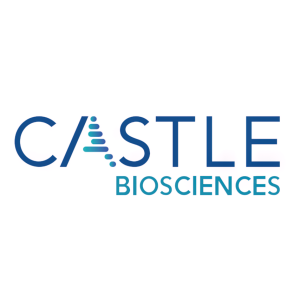Research Published in Melanoma Management Finds that 99% of Patients with Uveal Melanoma Tested with DecisionDx®-UM Gain Value from the Results
There was no significant difference in decision regret levels among those receiving a low- (Class 1A), intermediate- (Class 1B) or high-risk (Class 2) DecisionDx-UM test result
“We were excited to embark on this collaboration with
The study aimed to assess patient experiences with DecisionDx®-UM testing and other prognostic methods through an online questionnaire that was distributed by the MRF’s CURE OM initiative. CURE OM (the Community United for Research and Education of Ocular Melanoma) is the MRF’s initiative to increase awareness, education and research funding for ocular melanoma, while improving the lives of people affected by this disease. The questionnaire captured anonymized information regarding patients’ experiences with prognostic testing following a diagnosis of UM; 177 patients completed the survey.
Highlights from the study include the following:
-
90% of respondents reported wanting prognostic information at the time of diagnosis. -
99% of respondents who had prognostic testing performed with DecisionDx-UM and shared their test results (80 out of 81 respondents) reported gaining value from their test result. -
Patients reported gaining value from their prognostic test results, including:
- More personalized treatment options
- Increased knowledge and understanding of their disease
- Relief from uncertainty about the future
- Information relevant to life planning
- Patients who received a low-risk (Class 1A) DecisionDx-UM result were 10 times more likely than those who received a high-risk (Class 2) result to report gaining a “sense of relief from uncertainty about the future.” (X2=11, df=1, p=0.0009). Conversely, a majority of patients who received a high-risk (Class 2) result reported that their test result provided them “increased knowledge and understanding” about their disease (X2=17.48, df=3, p=0.0006).
- There was no significant difference in decision regret levels among those receiving a low- (Class 1A), intermediate- (Class 1B) or high-risk (Class 2) DecisionDx-UM test result (Kruskal-Wallis rank sum test, X2=4.1, p=0.13).
- Patients who chose to have some kind of prognostic testing experienced less decision regret than patients who opted out of testing, reinforcing the overall value that prognostic testing can bring to a patient’s care, regardless of whether they receive a low- or high-risk result.
About DecisionDx®-UM
DecisionDx-UM is Castle Biosciences’ 15-gene expression profile (GEP) test that uses an individual patient’s tumor biology to predict individual risk of metastasis in patients with uveal melanoma. DecisionDx-UM is the standard of care in the management of newly diagnosed uveal melanoma in the majority of ocular oncology practices in
About
About
Castle’s current portfolio consists of tests for skin cancers, uveal melanoma, Barrett’s esophagus and mental health conditions. Additionally, the Company has active research and development programs for tests in other diseases with high clinical need, including its test in development to predict systemic therapy response in patients with moderate-to-severe psoriasis, atopic dermatitis and related conditions. To learn more, please visit www.CastleBiosciences.com and connect with us on LinkedIn, Facebook, Twitter and Instagram.
DecisionDx-Melanoma, DecisionDx-CMSeq, DecisionDx-SCC, MyPath Melanoma, DiffDx-Melanoma, DecisionDx-UM, DecisionDx-PRAME, DecisionDx-UMSeq, TissueCypher and IDgenetix are trademarks of
Forward Looking Statements
This press release contains forward-looking statements within the meaning of Section 27A of the Securities Act of 1933, as amended, and Section 21E of the Securities Exchange Act of 1934, as amended, which are subject to the “safe harbor” created by those sections. These forward-looking statements include, but are not limited to, statements concerning: the value patients can gain by having personalized prognostic information; that having more information in advance of making treatment decisions is critical to having successful outcomes; our expectation that patients will continue to value and appreciate the information provided by tests like DecisionDx-UM, regardless of their overall prognosis; and the overall value that prognostic testing can bring to a patient’s care, regardless of whether they receive a low- or high-risk result. The words “can,” “expect,” “will” and similar expressions are intended to identify forward-looking statements, although not all forward-looking statements contain these identifying words. We may not actually achieve the plans, intentions or expectations disclosed in our forward-looking statements, and you should not place undue reliance on our forward-looking statements. Actual results or events could differ materially from the plans, intentions and expectations disclosed in the forward-looking statements that we make. These forward-looking statements involve risks and uncertainties that could cause our actual results to differ materially from those in the forward-looking statements, including, without limitation: the effects of macroeconomic events and conditions, including inflation, the COVID-19 pandemic and geopolitical events, among others, on our business and our efforts to address its impact on our business; subsequent study or trial results and findings may contradict earlier study or trial results and findings or may not support the results obtained in this study, including with respect to the discussion of DecisionDx-UM in this press release; actual application of our tests may not provide the aforementioned benefits to patients; and the risks set forth under the heading “Risk Factors” in our Quarterly Report on Form 10-Q for the three months ended
View source version on businesswire.com: https://www.businesswire.com/news/home/20221117005114/en/
Investor Contact:
czuckero@castlebiosciences.com
Media Contact:
amarshall@castlebiosciences.com
Source:






